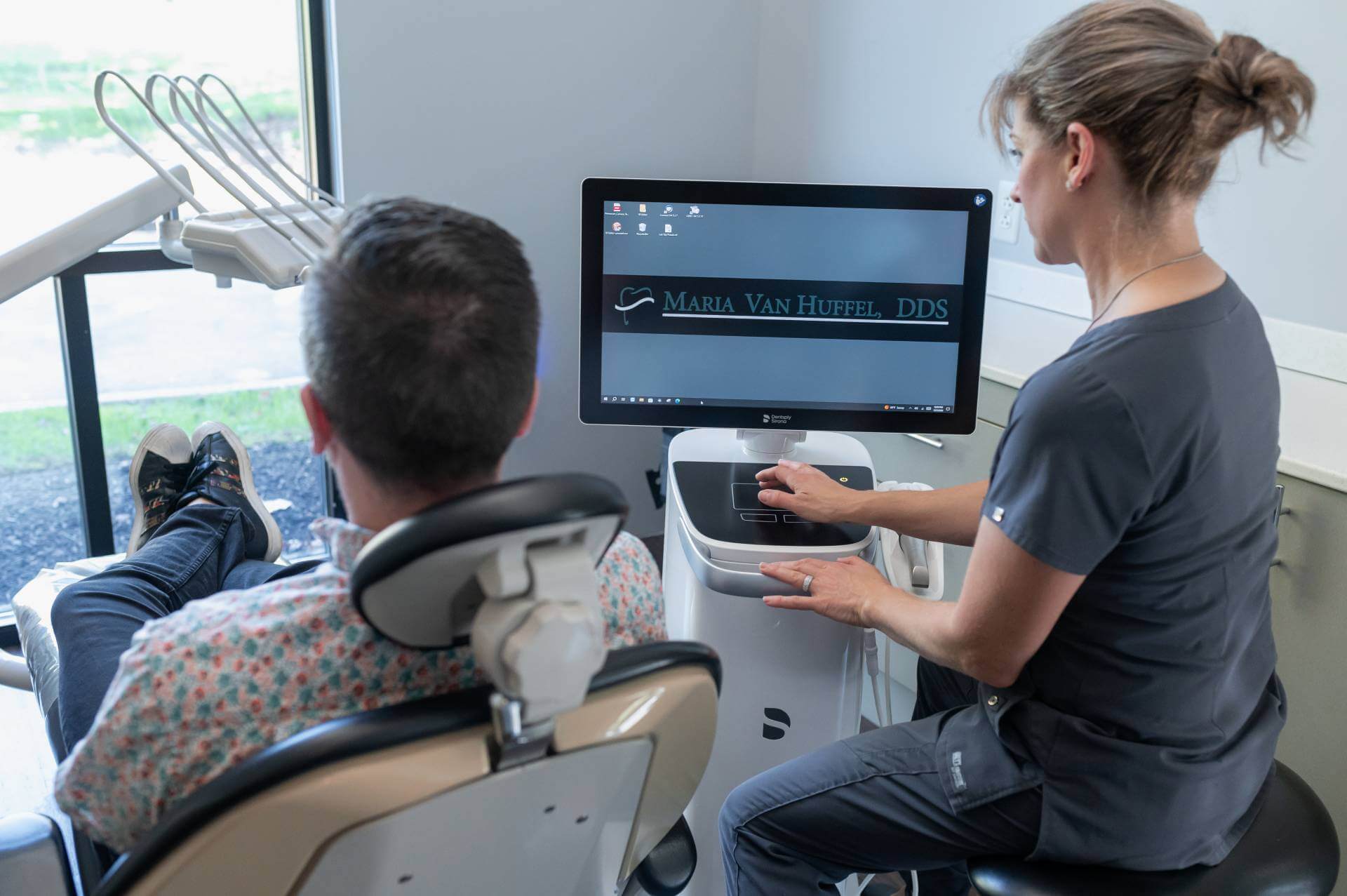Wisdom Teeth Removal in Gahanna, OH
Book An Appointment
Comfort-Focused Wisdom Teeth Removal in Gahanna, OH
At Van Huffel, DDS, we understand that the thought of having your wisdom teeth removed can be daunting. However, wisdom teeth removal is often necessary for maintaining your oral health and preventing potential complications. Our team focuses on making the extraction process as comfortable and stress-free as possible, using advanced techniques to ensure a smooth recovery. Whether your wisdom teeth are impacted or simply need to be removed to maintain your dental health, we’re here to guide you through every step of the process.

Why Wisdom Teeth Removal Is Important
Wisdom teeth, also known as third molars, typically emerge in late adolescence or early adulthood. In many cases, there is not enough space in the jaw for these teeth to grow properly, which can lead to various issues, including:
Impaction
When wisdom teeth become trapped beneath the gums, they can cause pain, swelling, and infection.
Crowding
The presence of wisdom teeth can push adjacent teeth out of alignment, leading to overcrowding and bite issues.
Infection and Cavities
Partially erupted wisdom teeth are more susceptible to decay and infection, as they are difficult to clean properly.
To avoid these complications, it is often recommended to have wisdom teeth removed, especially if they show signs of impaction or misalignment.
The Wisdom Teeth Removal Process

Aftercare Instructions
Your recovery and comfort are our top priorities following a wisdom tooth extraction. After your procedure, we’ll provide you with personalized aftercare instructions to help ensure a smooth recovery. For the first 24 hours, it’s important to rest, avoid strenuous activities, and use an ice pack to reduce swelling. Stick to soft foods and avoid using straws, as this can dislodge the blood clot and delay healing. We also recommend rinsing gently with warm salt water starting the day after surgery to keep the area clean. If you experience any discomfort, over-the-counter pain medication can help manage it. Our team is always available if you have any questions or concerns during your recovery
Prevent Further Issues with Wisdom Teeth Removal
At Van Huffel, DDS, we want you to experience wisdom teeth removal that is as comfortable and stress-free as possible. Our experienced team is here to guide you through every step of the process, from initial consultation to aftercare.
If you have questions about wisdom teeth or would like to schedule a consultation, contact our office today.
